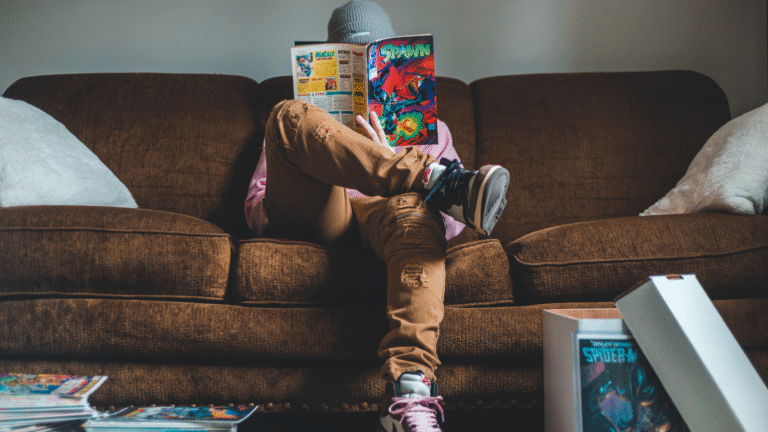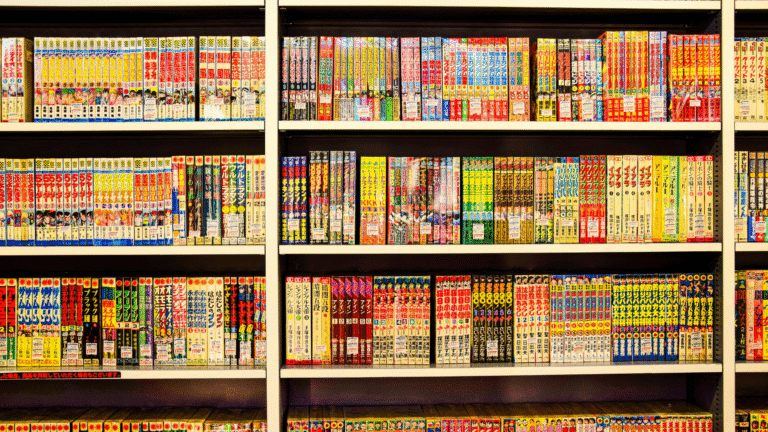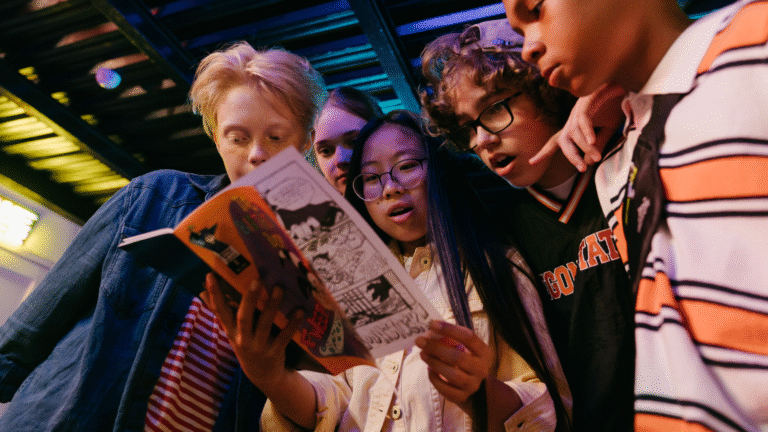A truly great comic book villain captivates audiences not only through their power and intimidation but also via their complexity and depth. What sets the best villains apart is their relatable motives and backstories that resonate with readers, making them more than just obstacles for heroes. They reflect the darker aspects of the human experience, challenging the protagonist and engaging the audience on a deeper emotional level.
In the realm of comic books, classic villains like the Joker or Magneto exemplify how a well-crafted antagonist brings richness to the story. These characters often embody conflicting ideologies, creating compelling narratives that force both heroes and readers to confront difficult questions about morality and justice. Their layered personalities contribute to thrilling plots and unforgettable moments, making them essential to the comic book landscape.
Ultimately, the most memorable comic book villains become iconic because they provoke thought and emotions. Their influence stretches beyond the pages of comics, impacting movies, merchandise, and popular culture. Understanding what makes these villains great enhances the appreciation of the stories they inhabit and the heroes they oppose.
Core Traits of a Great Comic Book Villain
A compelling comic book villain typically possesses complex motivations, a memorable personality, and effective antagonism against the protagonist. These traits work together to create an antagonist that resonates with readers and enhances the story.
Complex Motivations
Great comic book villains often have motivations that extend beyond simple evil. For instance, they might seek justice, revenge, or power. Their desires may stem from personal trauma or societal issues, making them relatable.
Examples include characters like Magneto, whose action arises from a desire to protect mutantkind, shaped by his experiences as a Holocaust survivor. Such layers add depth, allowing readers to understand, if not sympathize, with their choices.
Creating a backstory that informs their motivations is essential. This can engage readers and encourage them to see the villain’s perspective, enriching the conflict of the narrative.
Memorable Personality
A standout villain’s personality leaves a lasting impression. This can manifest through distinctive traits, unique mannerisms, or memorable catchphrases. The way a villain interacts with others often defines their character.
Take the Joker, for example. His chaotic demeanor and dark humor contrast sharply with Batman’s seriousness, making him unforgettable. Great villains often have charisma or intelligence that draws readers in.
Moreover, their emotional range can vary, from calm calculation to explosive rage. This contrast not only creates tension but also makes their interactions with heroes more exciting and unpredictable.
Effective Antagonism
An effective comic book villain serves as a formidable challenge to the hero. This raises the stakes of the story, pushing the protagonist to their limits. Such dynamics keep readers engaged and invested in the outcome of their clashes.
Villains should be clever and resourceful, often testing the hero’s strengths and weaknesses. Lex Luthor, for instance, often relies on intellect to undermine Superman, showcasing that brawn isn’t always the answer.
This adversarial relationship should evolve, presenting new challenges throughout the narrative. Strong villains adapt their strategies in response to the hero’s actions, ensuring that their conflict remains fresh and dynamic.
Iconic Examples of Comic Book Villains
Comic book villains often embody complex traits that resonate with readers. They challenge protagonists and often reflect societal issues, showcasing moral dilemmas and psychological depth.
Joker and the Psychology of Chaos
The Joker stands as one of the most notorious villains in comic book history. His chaotic nature creates a striking contrast to Batman’s order. This character thrives on unpredictability, using terror and absurdity to destabilize Gotham City.
His motives are often rooted in a skewed sense of humor, reflecting a twisted worldview. This psychological complexity makes him more than a mere antagonist; he embodies the chaotic elements of society. With various adaptations, his persona remains compelling, exploring themes of insanity and morality.
Magneto’s Moral Ambiguity
Magneto, a prominent figure in the X-Men series, presents a nuanced perspective on villainy. As a mutant who faced discrimination, his motivations stem from a desire to protect his kind. Unlike typical villains, he operates on a moral compass driven by survival and empowerment rather than sheer malice.
His actions raise questions about justice for marginalized groups. The character’s transformation over time—from villain to anti-hero—adds layers to his personality. Readers often grapple with his philosophy, making Magneto a pivotal character in discussions about heroism and villainy.
Thanos and the Infinity Gauntlet
Thanos, primarily known from the Avengers saga, is a figure of immense power and ambition. His quest for the Infinity Gauntlet symbolizes a desire for balance in the universe, albeit through drastic measures. He believes that eradicating half of all life will restore order and prevent resource depletion.
This grim rationale reveals the danger of utilitarianism taken to the extreme. The character encapsulates grand themes of sacrifice, duty, and the consequences of unchecked power. Thanos’s portrayal in film and comics solidifies his status as a significant comic book villain.
Lex Luthor’s Rivalry With Superman
Lex Luthor serves as a primary antagonist for Superman, representing intellect and human ambition. His rivalry highlights the tension between technology and otherworldly powers. Luthor’s motivations are often driven by a deep-seated fear of Superman’s potential tyranny over humanity.
His character is defined by his genius and resourcefulness, making him a formidable foe. He illuminates societal fears concerning power imbalances between humans and superhumans. The complexity of their interactions enriches the narrative, showcasing the battle between good and evil from a different lens.
Villains Across Media: From Comics to Cinema
The portrayal of villains has evolved dramatically from the comic book pages to the big screen. This transition showcases how character depth and narrative complexity enrich the storytelling experience in both formats.
Transitioning From Page to Screen
Adapting comic book villains for movies and TV often involves reinterpreting their backstories and motivations. Characters like Darth Vader and Ultron have undergone significant transformations to resonate with modern audiences.
In comics, Darkseid primarily represents tyranny and power, but in film adaptations, his complexity often expands to include elements of tragic loss or ambition. The transition also affects visual representation, where a villain’s appearance must balance fidelity to the original while fitting into the cinematic universe.
Influence of Movies and TV Series
The success of comic book adaptations has significantly influenced how villains are conceptualized across various media. The popularity of series like The Walking Dead, featuring antagonists such as The Governor, demonstrates how television can explore moral ambiguity in villainy.
Movies like The Avengers showcase villains who often possess consistent motivations, making them more relatable. This cross-pollination allows creators to borrow traits from one medium, enhancing depth and relevance in another.
The Role of Adaptation in Legacy
Adaptations serve as a vehicle for expanding a villain’s legacy, allowing audiences to engage with characters in diverse settings. This can transform perceptions; for instance, adaptations of the Robins often emphasize their relationship with Batman, affecting how villains are portrayed in relation to heroes.
Films and series can reinterpret motivations, making classic villains like Apocalypse more complex. This evolving narrative allows them to resonate with new generations, ensuring their relevance remains intact over time. Adaptations not only secure a villain’s legacy but also enrich the larger cinematic landscape.
Impact of Great Villains on Superheroes and Stories
Great villains significantly influence the evolution of superheroes and the overall storytelling process. Their actions and motivations create crucial moments that drive character arcs and narrative developments. This section highlights three main areas where villains leave a lasting impact.
Driving Character Development
Villains often serve as catalysts for superhero growth. For instance, Daredevil’s struggles against Kingpin showcase how threats push him to adapt and refine his moral code.
Characters like Sinestro force superheroes to confront their own fears and weaknesses. This relationship often reveals deeper dimensions, as seen when Two-Face presents internal conflict for Batman, illuminating the fine line between justice and vengeance.
The nuances in these adversarial relationships challenge heroes to dig deeper into themselves, enhancing their development and relatability.
Shaping the Narrative
The presence of a formidable villain can significantly shape a story’s direction. The intricate plotting often relies on the villain’s actions to create tension and drive the story forward. For example, Bizarro challenges Superman not just physically but ethically, adding layers to their interactions.
Villains also introduce critical stakes. In The Dark Knight, the Joker’s chaotic intellect propels the narrative, altering character allegiances and raising essential questions about morality.
This dynamic interplay makes the story more compelling and unpredictable, often leading to unexpected twists and resolutions.
Defining the Hero’s Journey
A strong villain plays an essential role in defining a hero’s journey. The challenges posed by adversaries set the stage for pivotal moments of triumph or failure. Superheroes encounter their greatest tests through confrontations with villains like Sinestro or Two-Face.
These encounters often help heroes realize their true potential. They emerge changed after battling their foes, ultimately reaffirming or reshaping their values.
Thus, villains serve not merely as obstacles but as vital mechanisms for transformation, illuminating the hero’s path and enriching the narrative fabric of the story.







Recent Comments